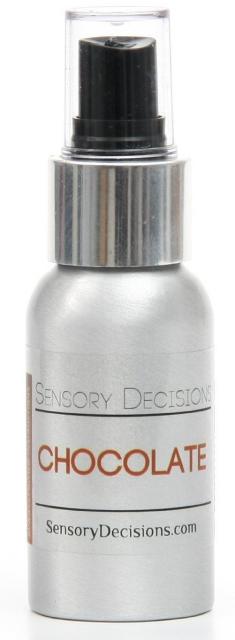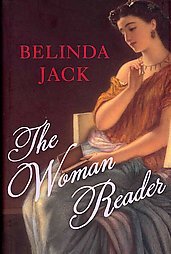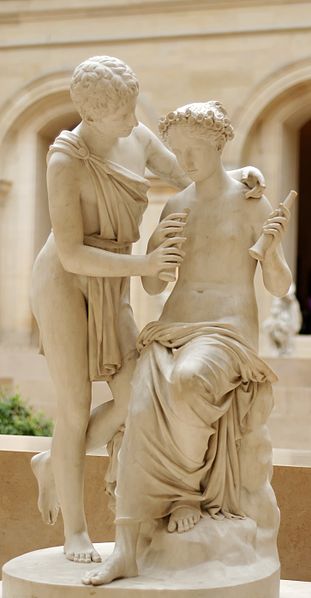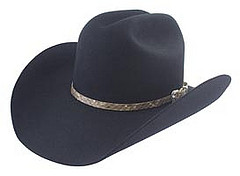I'm really pleased that I've finally been able to get hold of Mairead Owen's Women's Reading of Popular Romantic Fiction: A Case Study in the Mass Media, A Key to the Ideology of Women (1990). Given that Owen prefaces her analysis with the statement that
It seems essential to add to the literary critic's close reading of the text and to psychoanalytic theories, actual empirical data. It is not enough to speculate that women read to compensate for maternal deprivation or as part of rape fantasies or revenge fantasies. It is necessary, as in any science, to see if these theories really are operating. (20)
I think it can be seen as a British response to Janice A. Radway's much more well-known Reading the Romance: Women, Patriarchy and Popular Literature (1984) and Tania Modleski's Loving with a Vengeance: Mass-Produced Fantasies for Women (1982) and it is, I think, in response to their psychoanalytic analyses of readers that Owen states that, "To offer explanations couched only in psychoanalytic terms, is not only intellectually inconsistent, but also can perpetuate the disadvantaged situation of women and perhaps thereby we become 'the servants of power' " (337).
Owen "felt [...] that in Britain I had the ideal, and obvious, setting in which to encounter readers - the public libraries" (37) and she chose "libraries set in areas of varying social class, areas of prosperity and poverty, new estates and established centres" (37). The "main survey was done by putting questionnaires into [...] ten libraries over two weeks in October, 1987" (41-42).
As for her most important term of reference:
The definition of 'romantic fiction' I deliberately left to the librarians who, interestingly, considered it unproblematic. Romantic fiction consisted of those books shelved under romantic fiction or sent by the publishers or the library wholesalers as romantic fiction. There were occasional divergences of opinion as can be readily understood. Indeed Catherine Cookson (1988), one of the most widely-read authors and the author put at the top of the list of their most favourite authors of romantic fiction by my readers, wrote to me, 'You see, I do not consider myself to be a romantic writer in the sense in which the word is used today. It is only since Granada Television filmed The Mallens that this word was applied to my writing; and the paperback firm, solely for the purpose of appealing to the public, continued it from there.' (42)
"Romantic fiction" is a much broader category than "romance" since it includes novels in which the romantic element may not be as central to the plot as in a "romance". In addition, happy endings are not guaranteed. Nonetheless, Owen concludes that "The publishers are right to insist on the happy ending as far as my sample were concerned. It was mentioned again and again for the ideal romantic novel" (184).
In addition to depending on the judgement and cooperation of librarians, Owen spoke to and/or corresponded with authors, readers and publishers of romantic fiction.
AUTHORS: Owen gathered "information from fifteen authors through the survey, plus information from [...] four interviews" (89) with a further four authors. With regards to feminism, "Many of the authors who answered the questionnaire subscribed to feminist views[...] and felt that these could be incorporated in the romance formula. [...] On the other hand, some of the authors specifically rejected the values of feminism" (306).
She notes that
seventeen of my respondents were married at the time and the other two had been widowed. So much for the stereotype of frustrated spinsters creating their compensatory fantasies. They were also untypical of the general population, where one marriage in three ends in divorce, in that most marriages were, or had been, unusually stable and long lasting. Divorces were unusual in the sample. The question on marital staus [sic] asked about present status and not about any previous divorces but from correspondence and publicity material and interviews it seemed that only three or four had been involved in divorce. (90)
One author told Owen that "'Romantic fiction can play out a drama for the reader without the necessity of risk, can teach emotional truths without hurt" (108) and "distancing from the 'ideal of true love', was rare in the authors" (109). I wonder if a group who've mostly found their "happy ever after" are more likely than the general population to feel that although the characters in romance are often richer, more beautiful etc than most people, romances contain "emotional truths."
On a related note, Owen herself questions the perception that romantic fiction is "escapist":
In one sense there is escape in romantic fiction, though I would suggest only to the extent that to partake in any fictional entertainment, to read any novel, to watch any play or television or film, is to enter another world. However, I would query how real this aspect of escape is in the sense that people are leaving their own world behind. It is the only popular genre where people try to escape from their own lives into more of the same. Women turn from problems involving male partners or the desire to gain a male partner into books which deal with just that sphere of life. (127)
READERS: "One hundred and thirty-seven completed surveys were returned" (156) to Owen by readers and she notes that although "The stereotype of the reader of romantic fiction rarely includes any high estimate of their intelligence [...] my sample both from the surveys and the interviews gave a picture of very lively and intelligent women" (165). Although they all read romantic fiction
The readers did not read romantic fiction only. Ninety-six per cent of the respondents read other sorts of books as well. The range of interest was extremely wide. Some of it was genre reading. Detective fiction was particular popular [...]. Non-fiction played a great part and the range of interests represented was staggering - archaeology, religion, travel, biography, local history, politics, art. [...] Respected contemporary writers such as Margaret Drabble and Iris Murdoch, Allan Sillitoe, Joseph Heller, were accompanied by Evelyn Waugh, Jane Austen, Steinbeck. (171-72)
In their reading of romantic fiction
Catherine Cookson [...] headed the list of favourite authors, [...] followed by Danielle Steel. Following these two were Penny Jordan, Janet Dailey, Anne Mather and Jilly Cooper, Barbara Taylor Bradord, Jean Plaidy, as well as her alter ego, Victoria Holt, Georgette Heyer, Ann Hampson, Betty Neels, (who writes doctor/nurse romances and was also mentioned as an author who is least liked), Jessica Steele, Charlotte Lamb. (176)
Owen spoke in depth to a smaller number of readers: "Forty seemed to me a number large enough to throw up patterns of behaviour and ideas" (206). She found that although the widely held "view of the audience is of people who are not active, not in control, with no feeling that they could control or change their circumstances" (214-15), all but two of her
interviewees, while showing varying degrees of interest in formal politics, were confident that they could and would act to effect change in society. This might involve just writing letters, organising petitions or the like. Their interests ranged far and wide. (216)
As for the texts themselves, Owen felt that
because the texts are simple, the readers can project on to them, like Rorsach ink blots, the shapes that they desire and that arise out of their own feelings and needs. This leads to intriguing contradictions, where readers draw messages and pleasures from the texts which are diametrically opposed to those that other readers draw. The texts can be all things to all women. (217)
Also,
Readers developed in their reading as they got older. At school age they were using the books to explore ideas about marriage, love, sexuality, men. [...] The nineteen to twenty-four-year-olds also were thinking themselves forward into possible scenarios that might happen though predictably as their experience of the real world increased, the detachment and the wry amusement at the books and themselves grew. (220)
Readers varied in how they perceived the novels:
Many readers saw the books as echoing real life and also, more importantly, holding out lessons for real life. 'Because they can be so true to real life.' 'Typical of real life situations.' 'They can relate to own life.' On the other hand, 'A fantasy world, away from reality.' (182)
And so while "Perhaps it will surprise the cynical that many of the older readers said they enjoyed the books because they told a story of which they had once been the heroine" (181), "True to the romance's function as being all things to all women, the opposite view also came across equally, 'It's the only romance I get.' " (181).
Owen summarises her conclusions as follows:
It is rather daunting to sum up all the hours of talk and all the shades of opinion in a sentence but, except for a very small minority, neither in their homes nor in the wider society did my readers experience a really equal society. And in this [...] I think they were representative of women generally. In reading the books they take the reality of their life chances and refashion them into a possible answer. (337)
This refashioning involves
taking the circumstances of their lives and [...] shaking up the kaleidoscope into a pattern which pleases them [...]. By separating themselves from those lives rather than meeting the difficulties head on they are ironic, distanced, living in the interstices. It may be that it is something of a suspicion of this practice which leads the men in their lives and indeed the wider society to be so dismissive of the books on the one hand, so suspicious and uneasy on the other. Every aspect of their reading, from the act itself which leads them to withdraw from their supportive, attentive role to the type of fiction they read, takes the lives which society prescribes and turns them to a sort of benefit. (339)
PUBLISHERS: Owen "drew on information from seven different publishers of romantic fiction" (34). She observed that
The men who publish the books, especially the soft romances, I did feel, in spite of denials, had a patronising attitude to their readers. They are women's books and I felt that it was merely a marketing exercise indeed analogous to the selling of soap [...]. It is only a subjective impression but I did gather a feeling of giving a not very highly rated consumer what she wanted.
Editors were leading relatively 'feminist' lives, with independent and well-paid work and in their replies, they disassociated themselves from the readers while at the same time defending the readers' right to read what they wished. But they did not see the readers as women like themselves. 'I do occasionally think of people, like, I don't know, the average reader and I do bear them in mind. My mother or something. And I just talk to as many people as I can.' (305)
LIBRARIANS: Apparently
The majority of the librarians did seem to share an assumption that romances come at the bottom of a hierarchy of 'good' writing. [...] Starting from this basic assumption, the attitude of the librarians to the huge poplarity [sic] of romantic fiction seemed to split into two very distinct categories. Some librarians had a 'Reithian' attitude to romance. In earlier days of the BBC, broadcasters felt that their mission was to educate and inform as well as to entertain, that it was their duty to lead their listeners and viewers to an appreciation of all that was best in our culture. Similarly some of the librarians felt that it was their duty to lead their readers to good literature. On the other hand the 'libertarian' attitude suggested that borrowers had a right to read what they wished and it was the duty of the library to provide. (79-80)
She adds that "It is significant that the librarians did not, on the whole, read romance themselves" (81). One
librarian talked to me about the way in which readers would come to her desk with ten or more romances to take out. 'I don't know why they bother,' she said. 'They're only like the stories you tell yourself at bedtime to make you fall off to sleep.' (310)
You can download your own copy of Owen's thesis free of charge by creating an account with EThOS (Electronic Theses Online Service) at the British Library. Here's the page from which the thesis can be obtained.
---------
Owen, Mairead. Women's Reading of Popular Romantic Fiction: A Case Study in the Mass Media, A Key to the Ideology of Women. PhD Thesis. University of Liverpool. 1990.

 It is known that "Scents can influence people’s attitudes and behavior [...]. The scent of chocolate, for instance, evokes pleasure and arousal for most consumers" (Doucé et al 3). What, then, would happen if a bookshop was filled with a smell of chocolate so subtle that "none of the customers spontaneously noticed the chocolate scent" (7)?
It is known that "Scents can influence people’s attitudes and behavior [...]. The scent of chocolate, for instance, evokes pleasure and arousal for most consumers" (Doucé et al 3). What, then, would happen if a bookshop was filled with a smell of chocolate so subtle that "none of the customers spontaneously noticed the chocolate scent" (7)?
 As you may have deduced from my recent posts, I've been slowly working my way through Belinda Jack's The Woman Reader, which
As you may have deduced from my recent posts, I've been slowly working my way through Belinda Jack's The Woman Reader, which In
In 